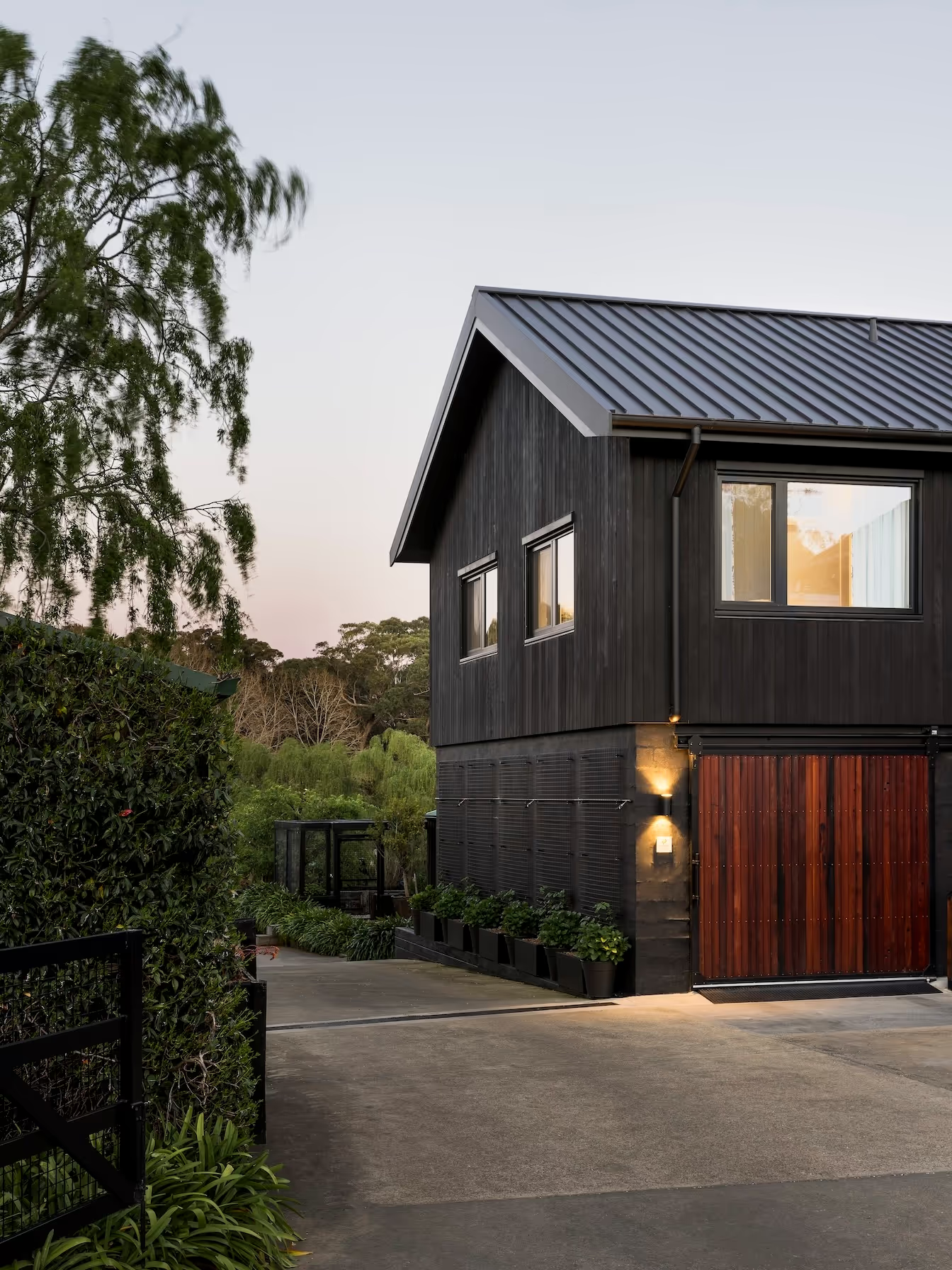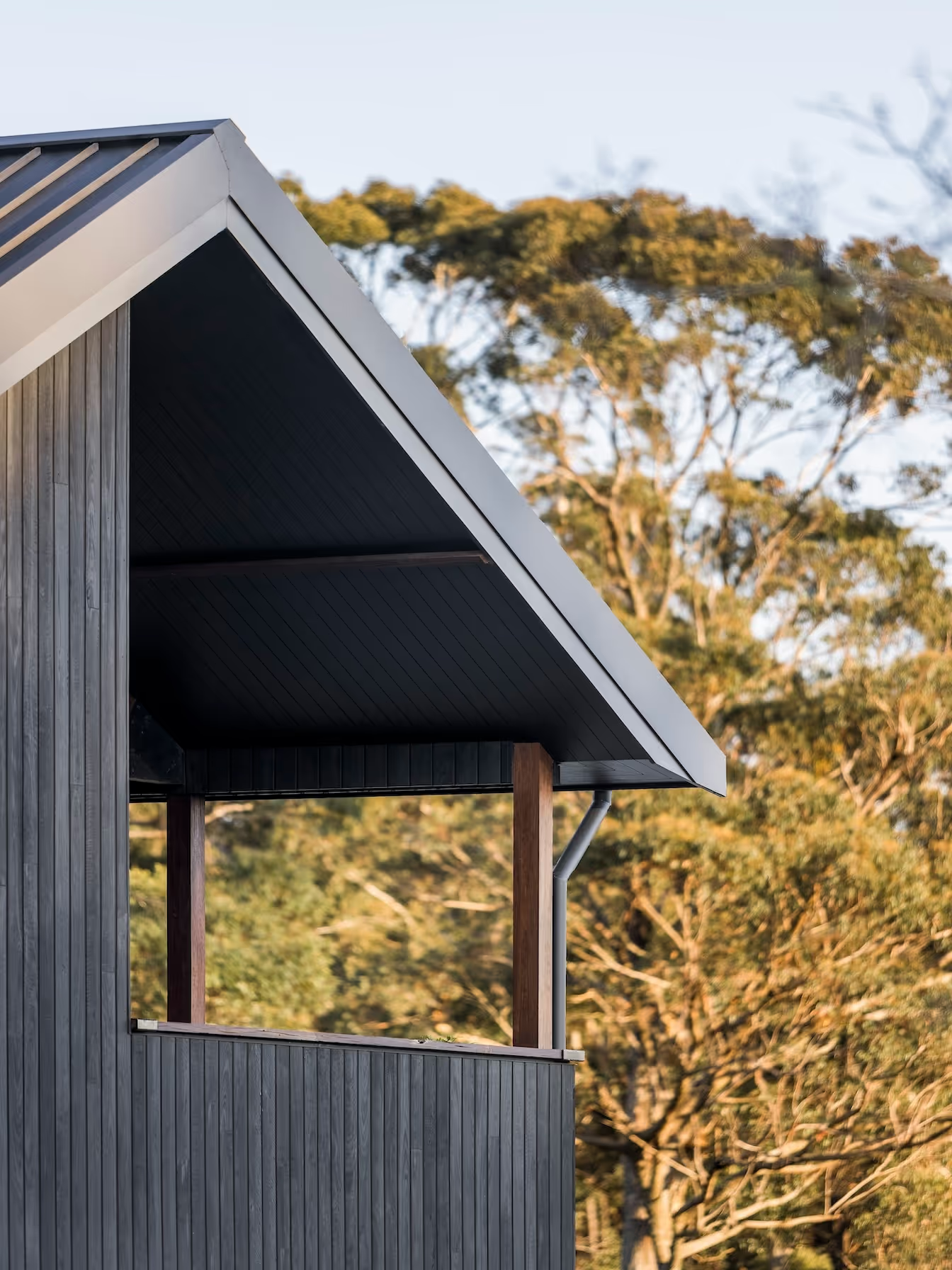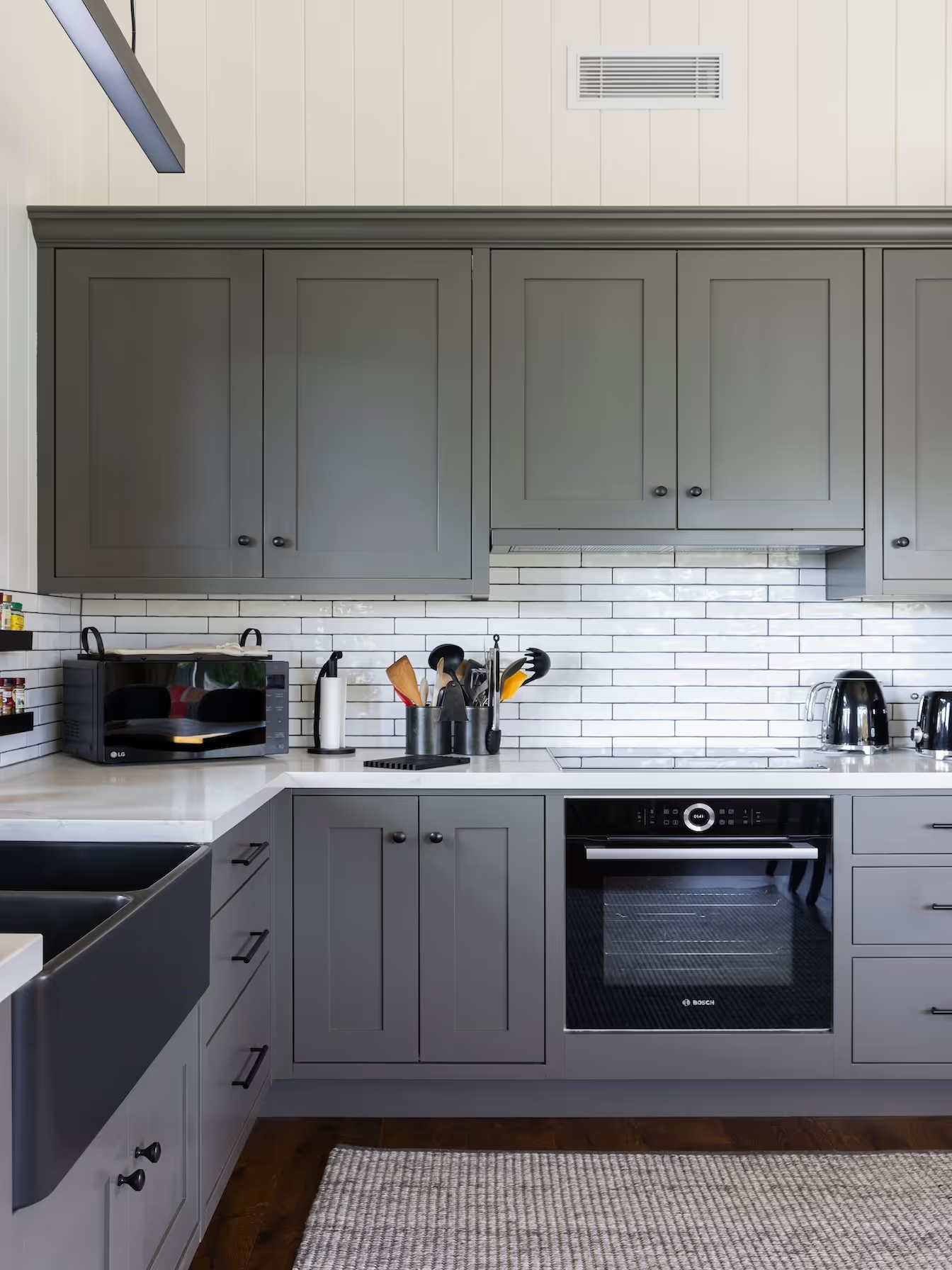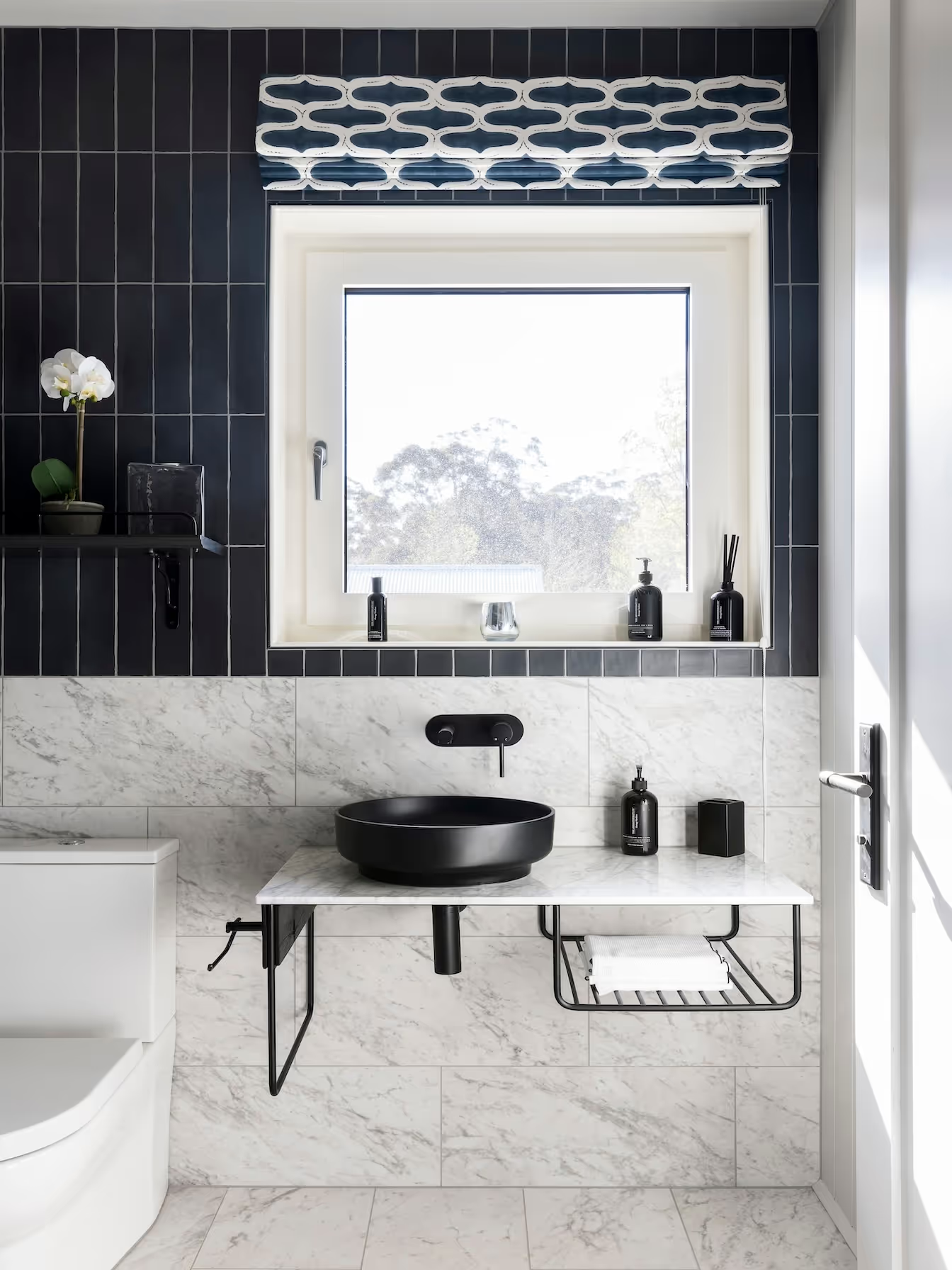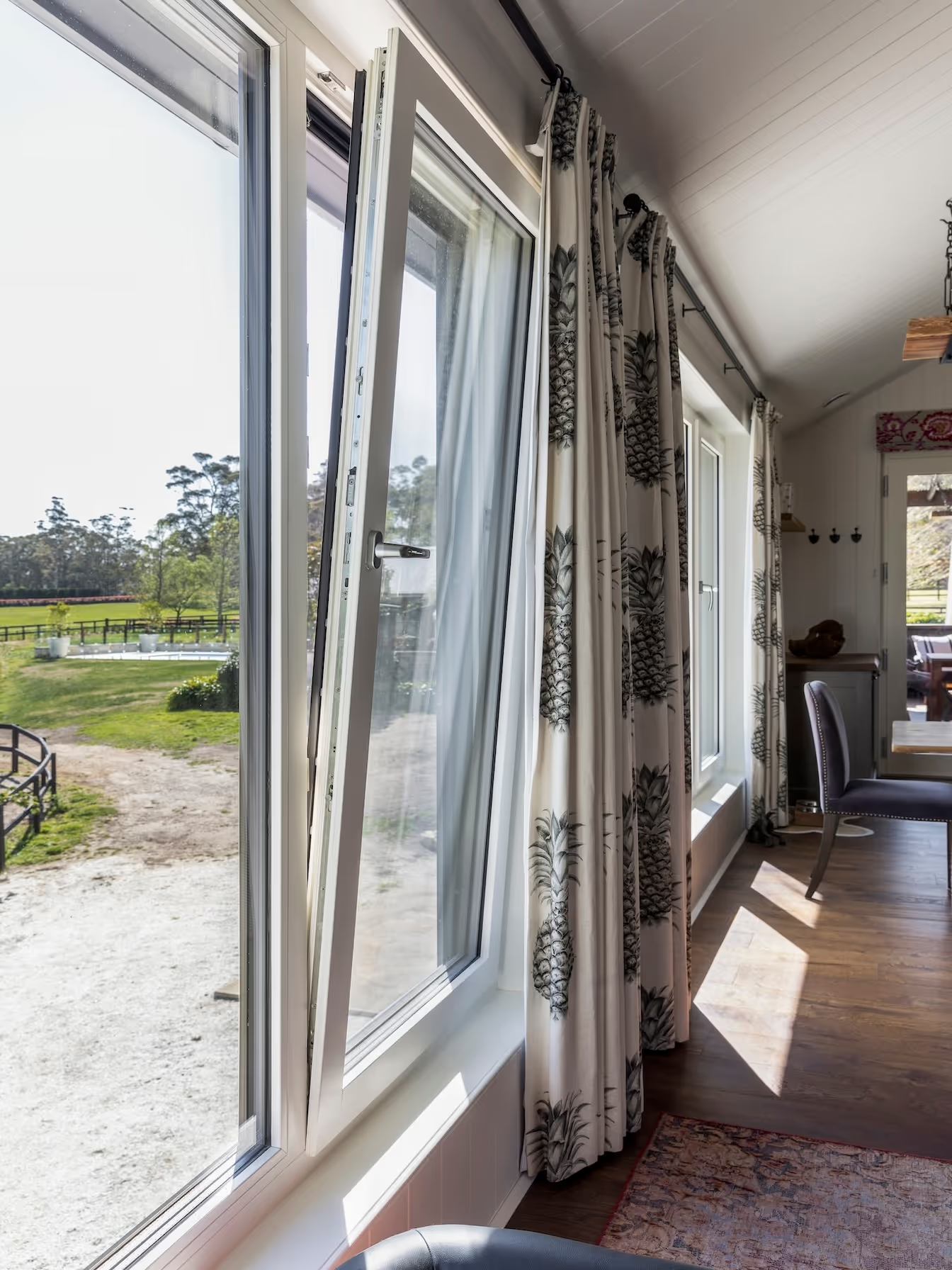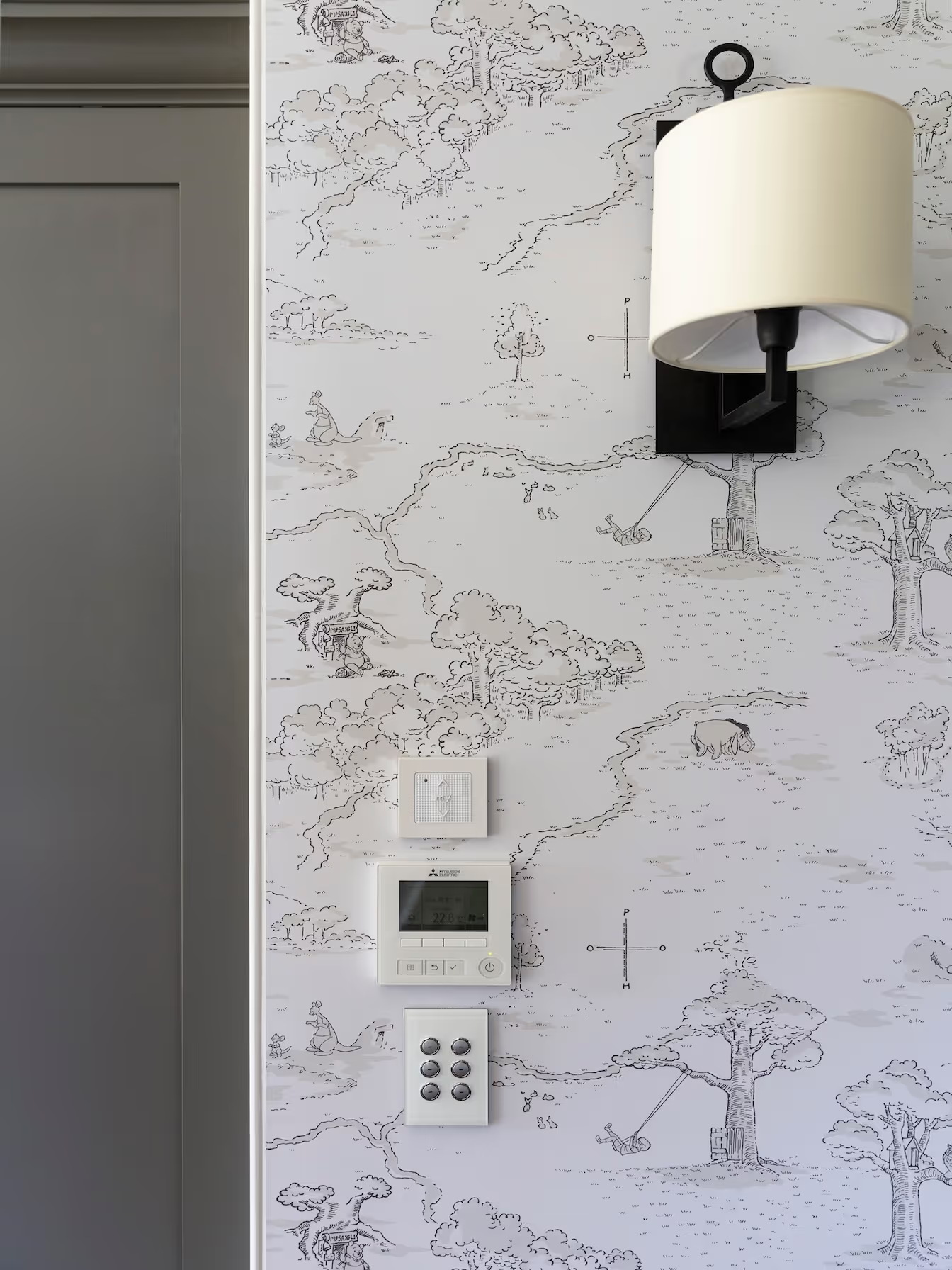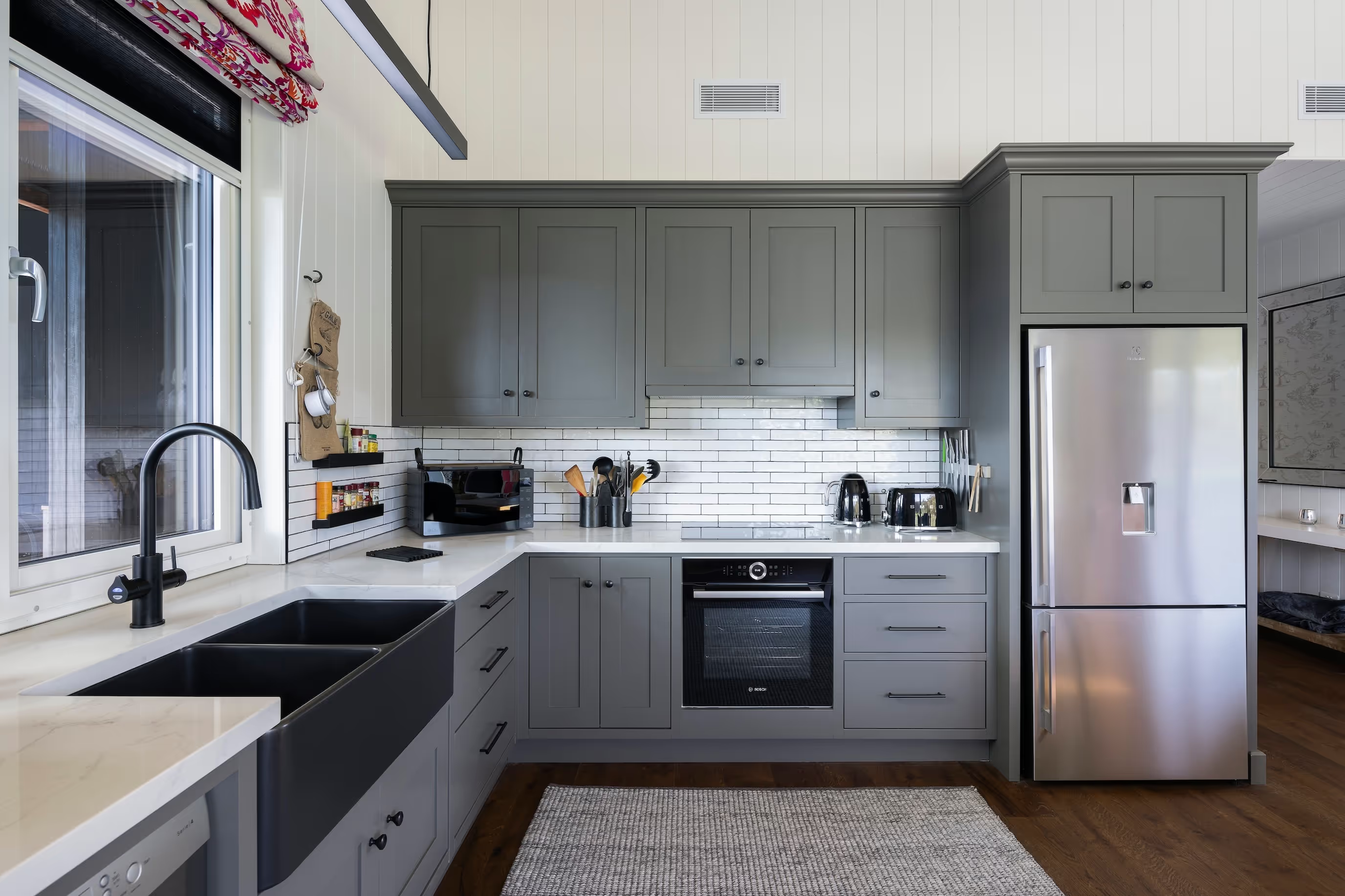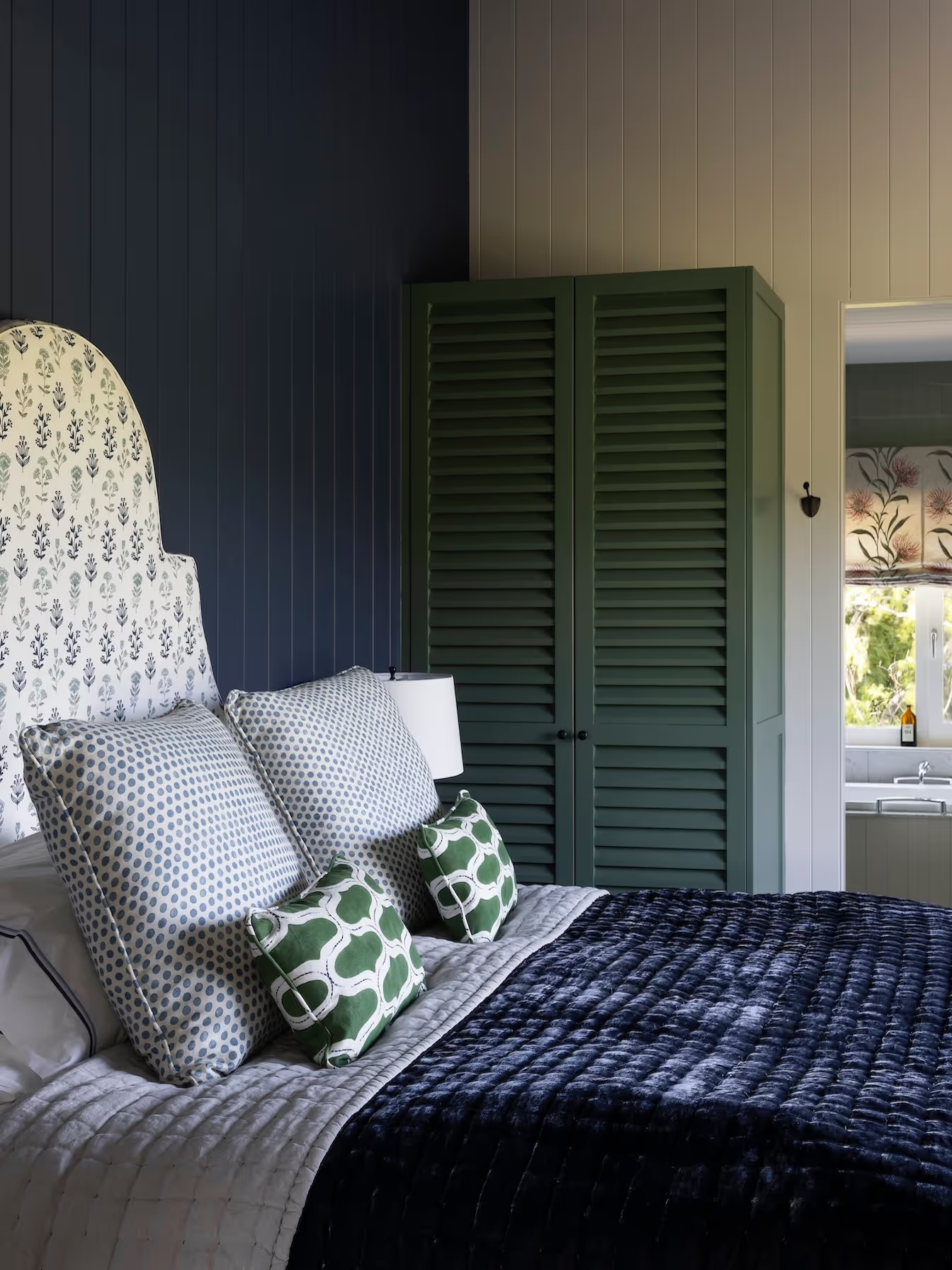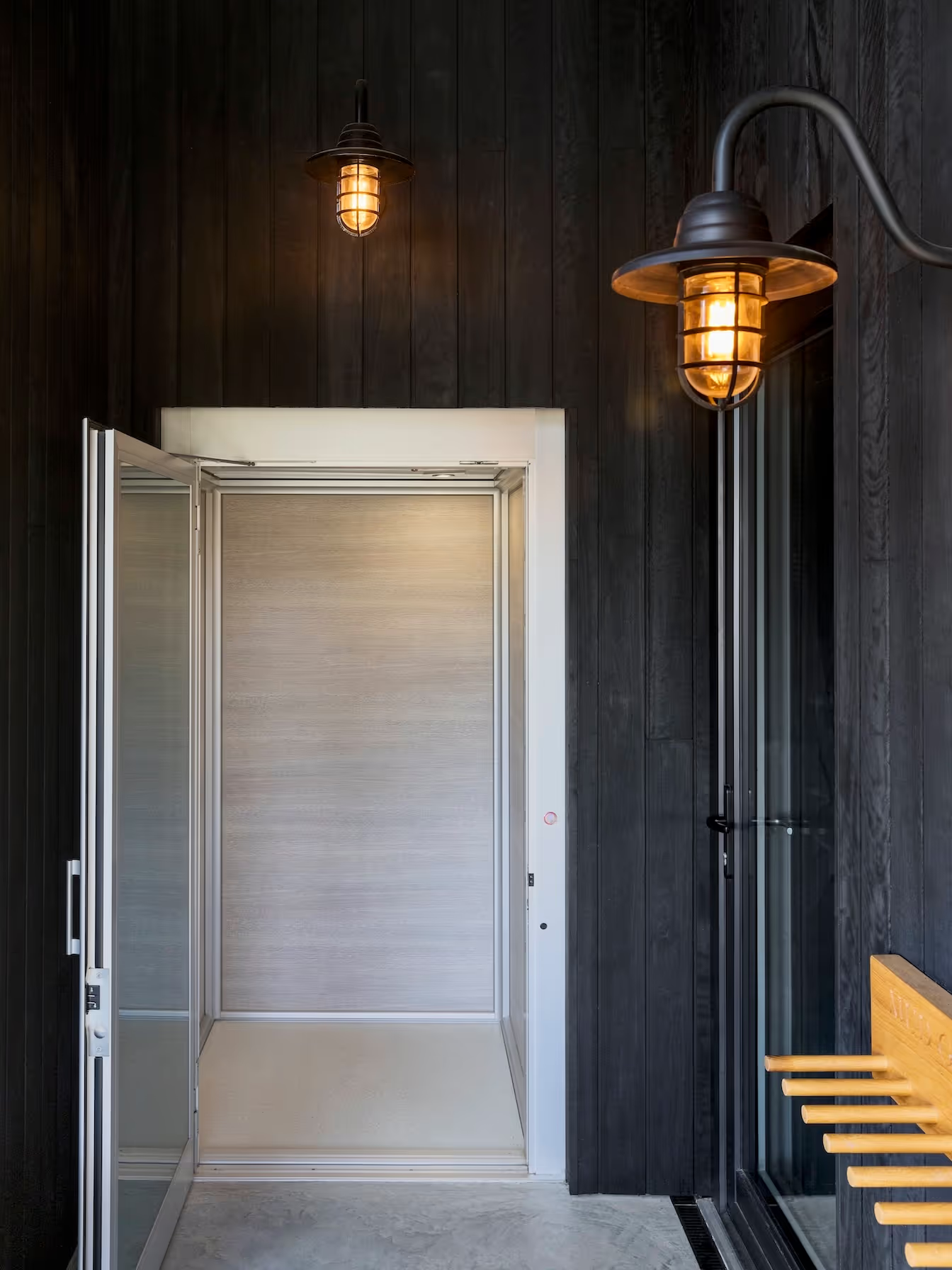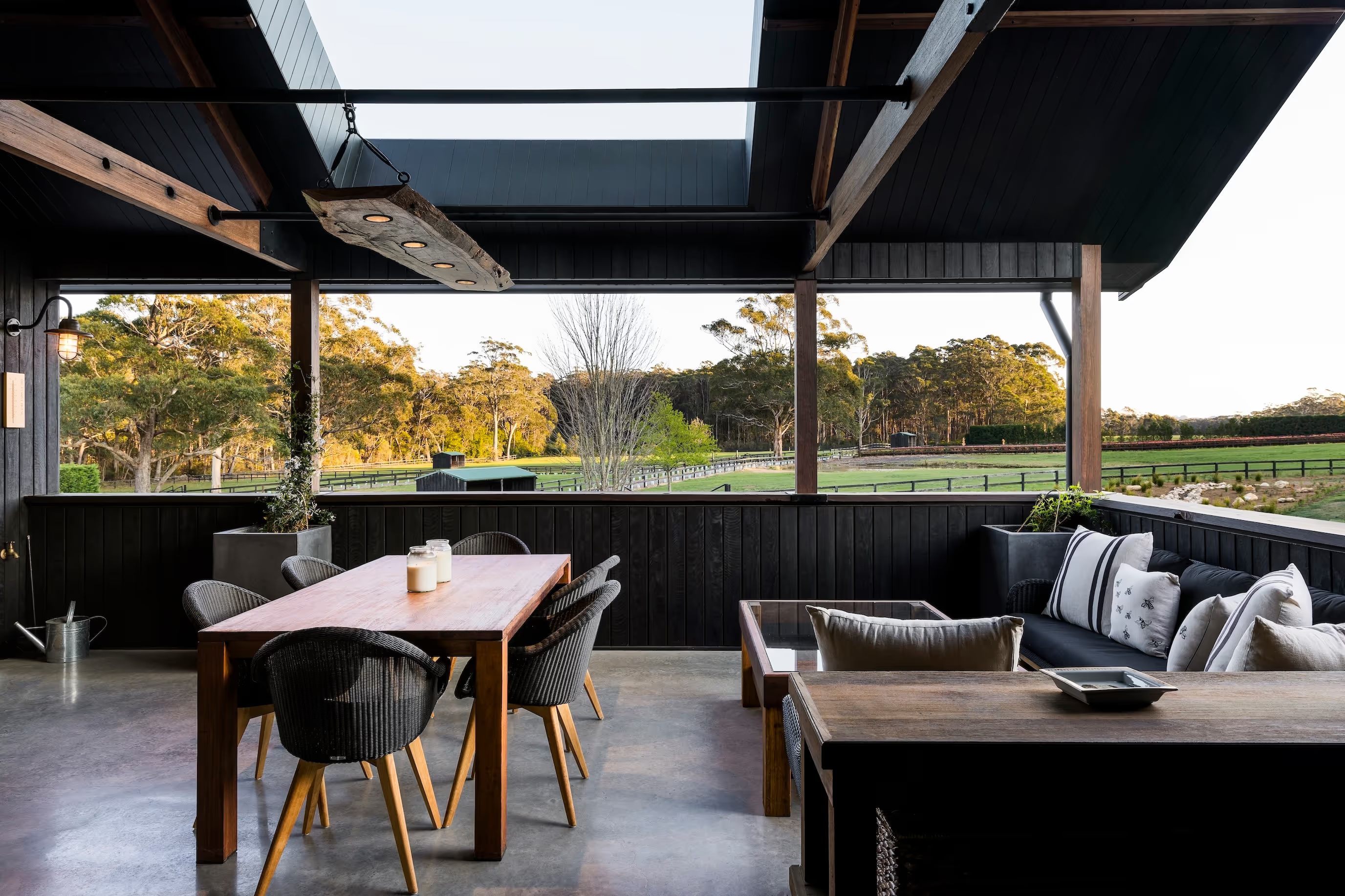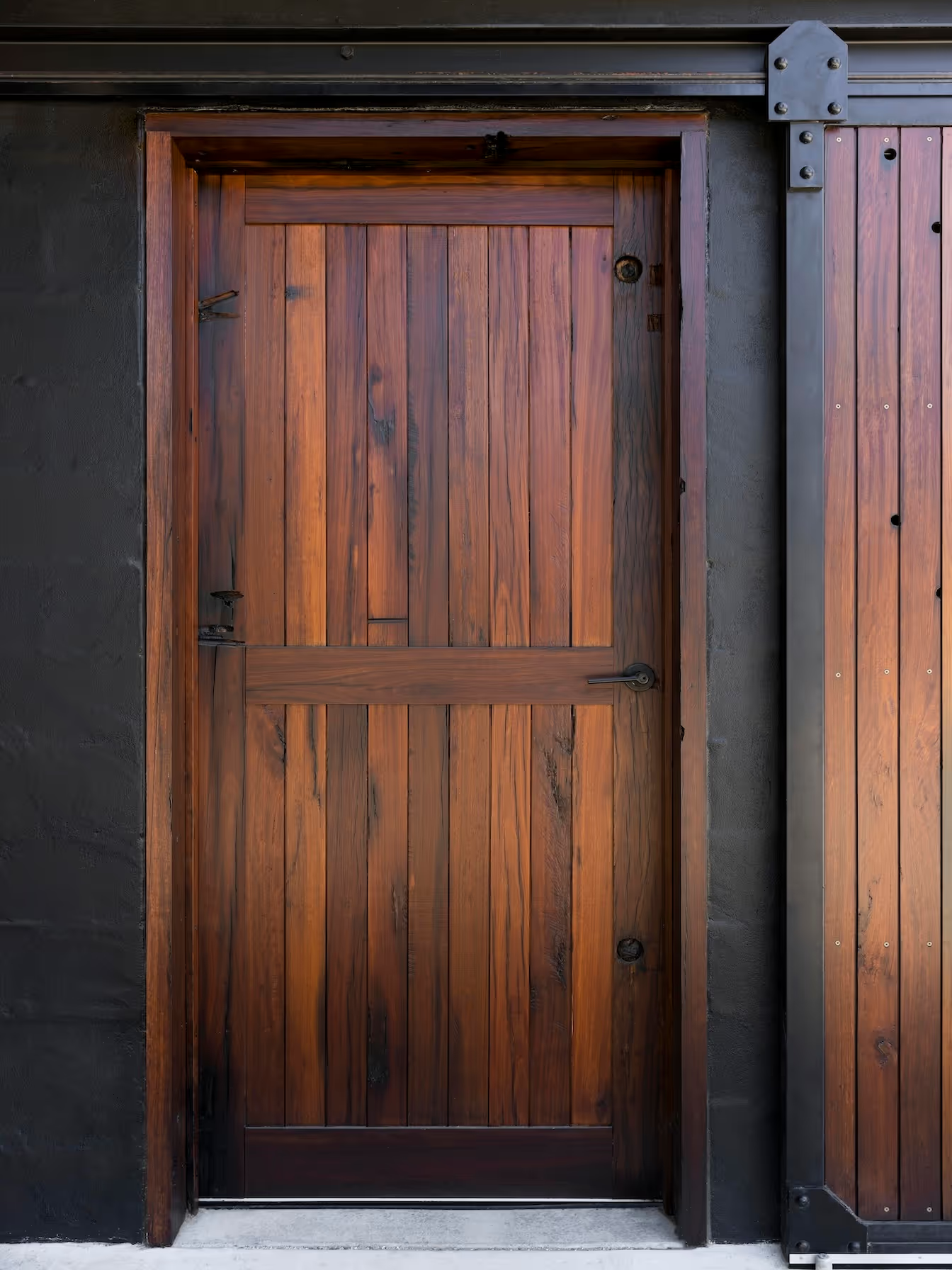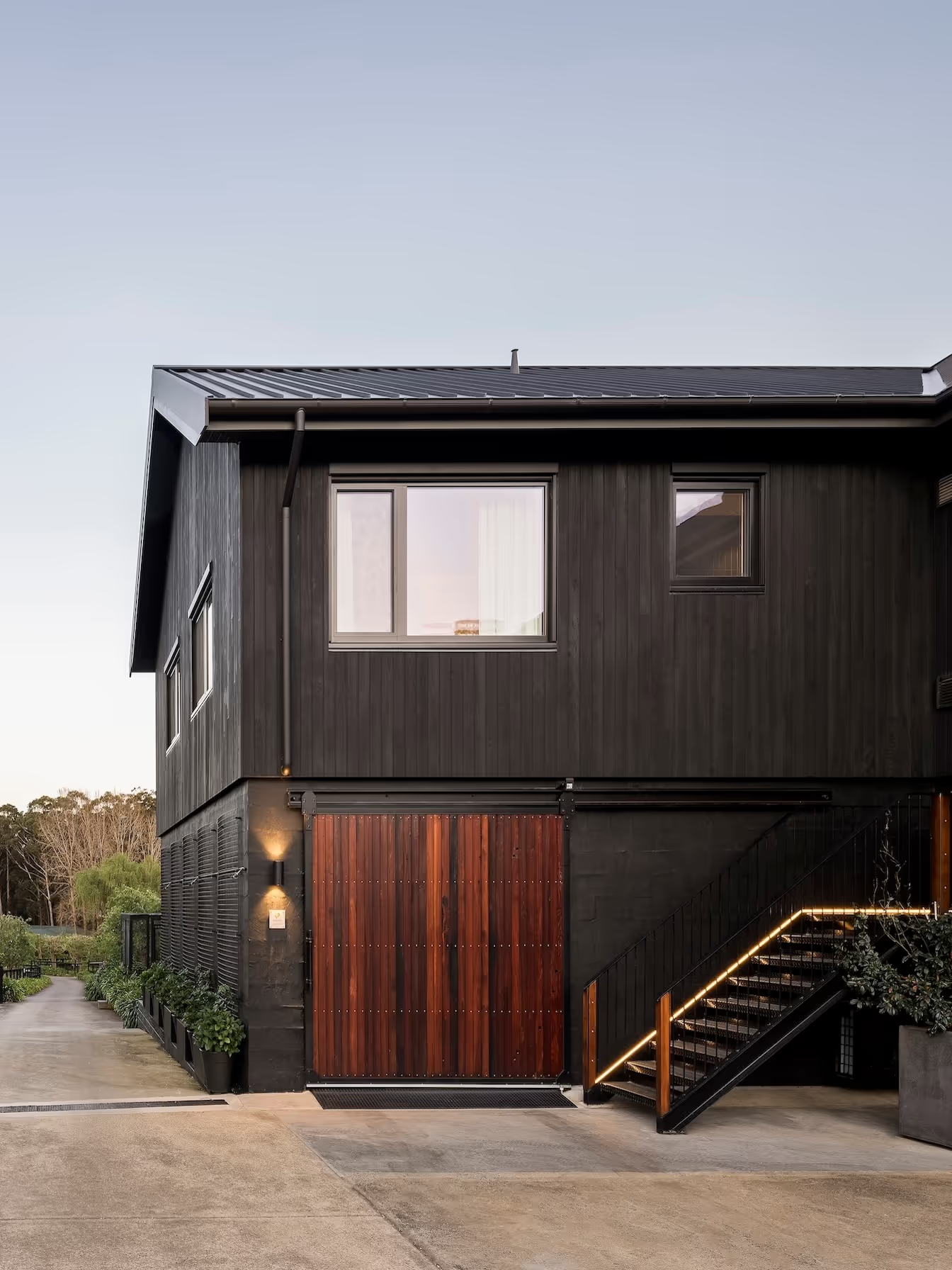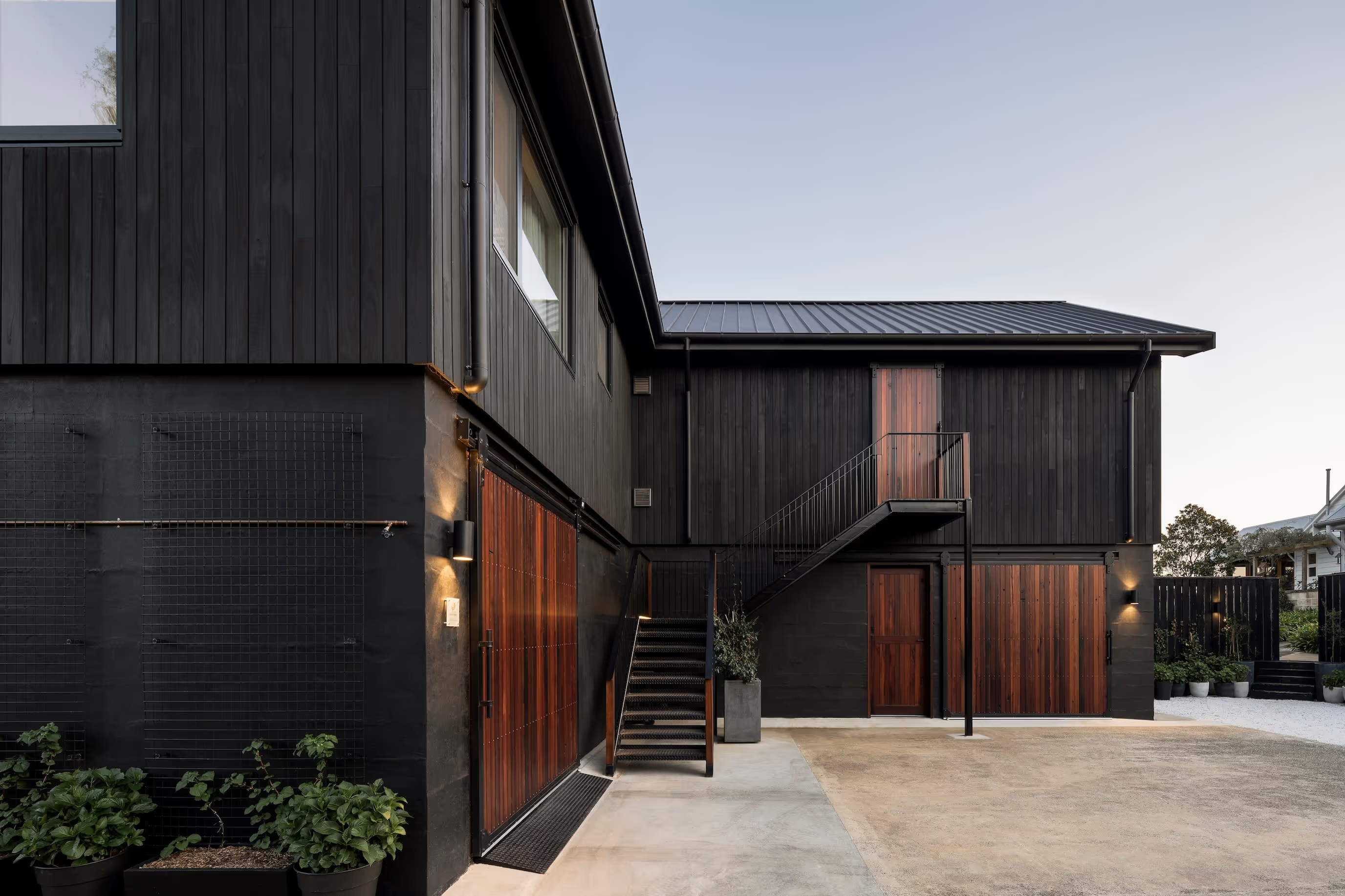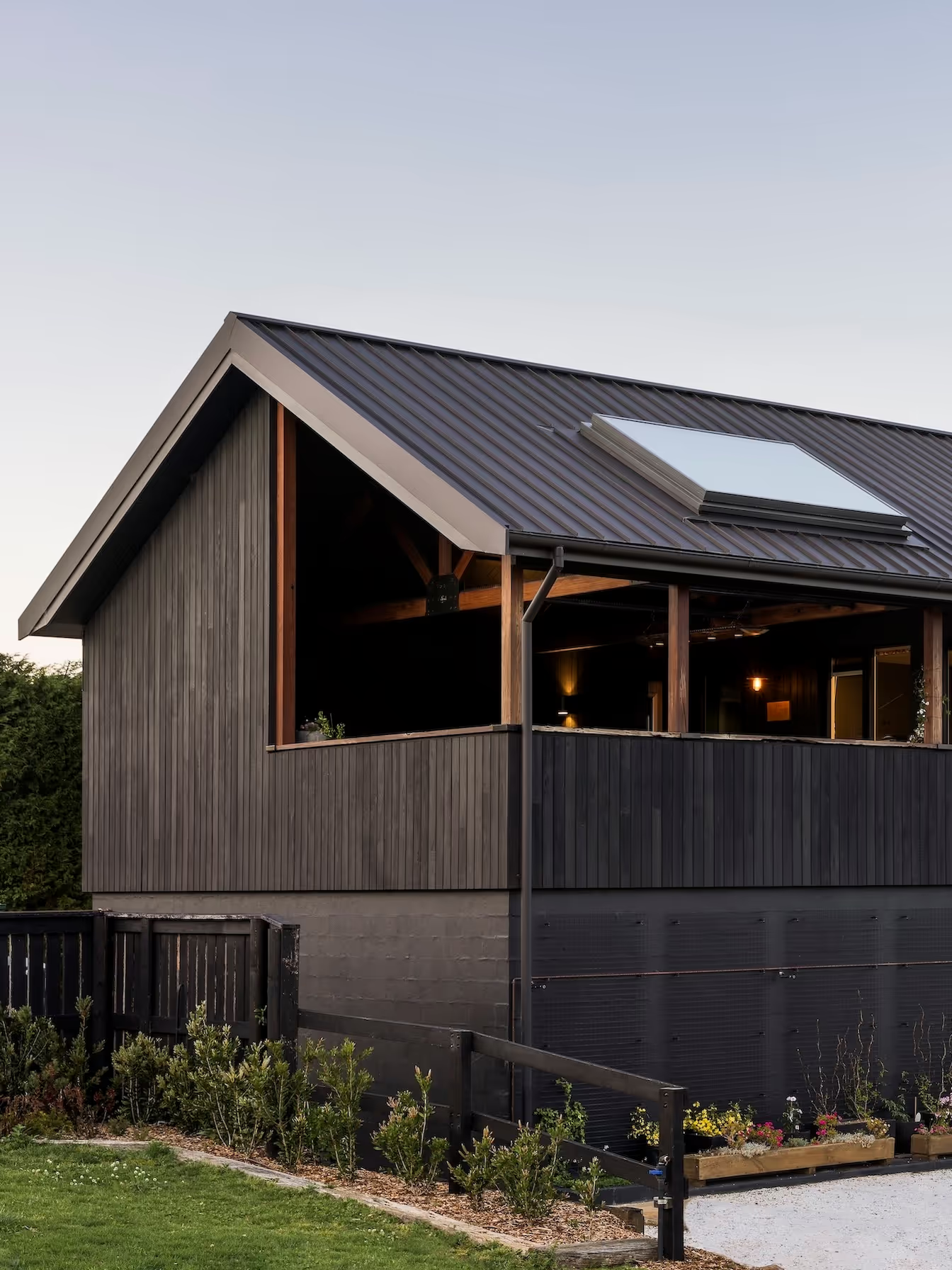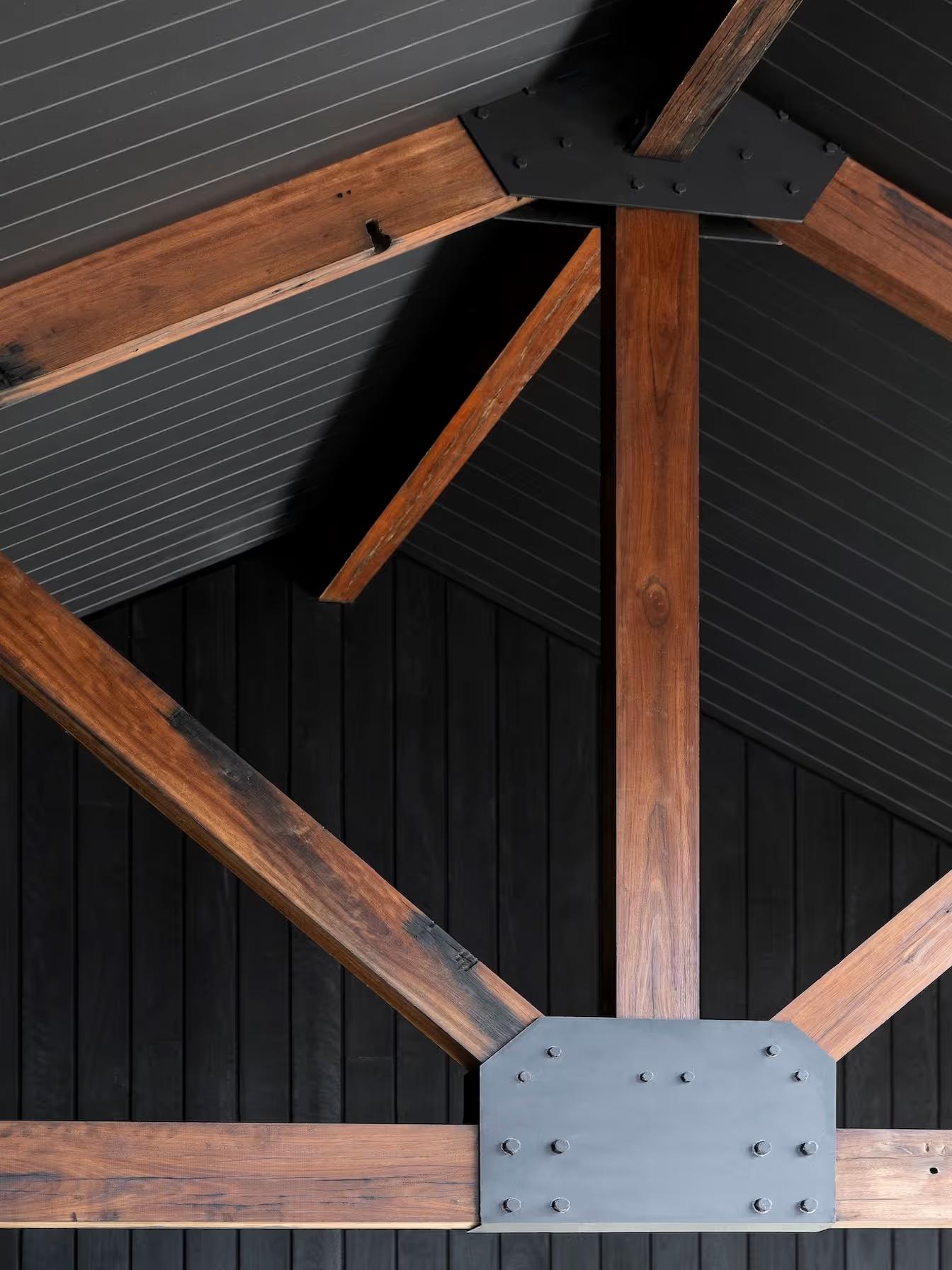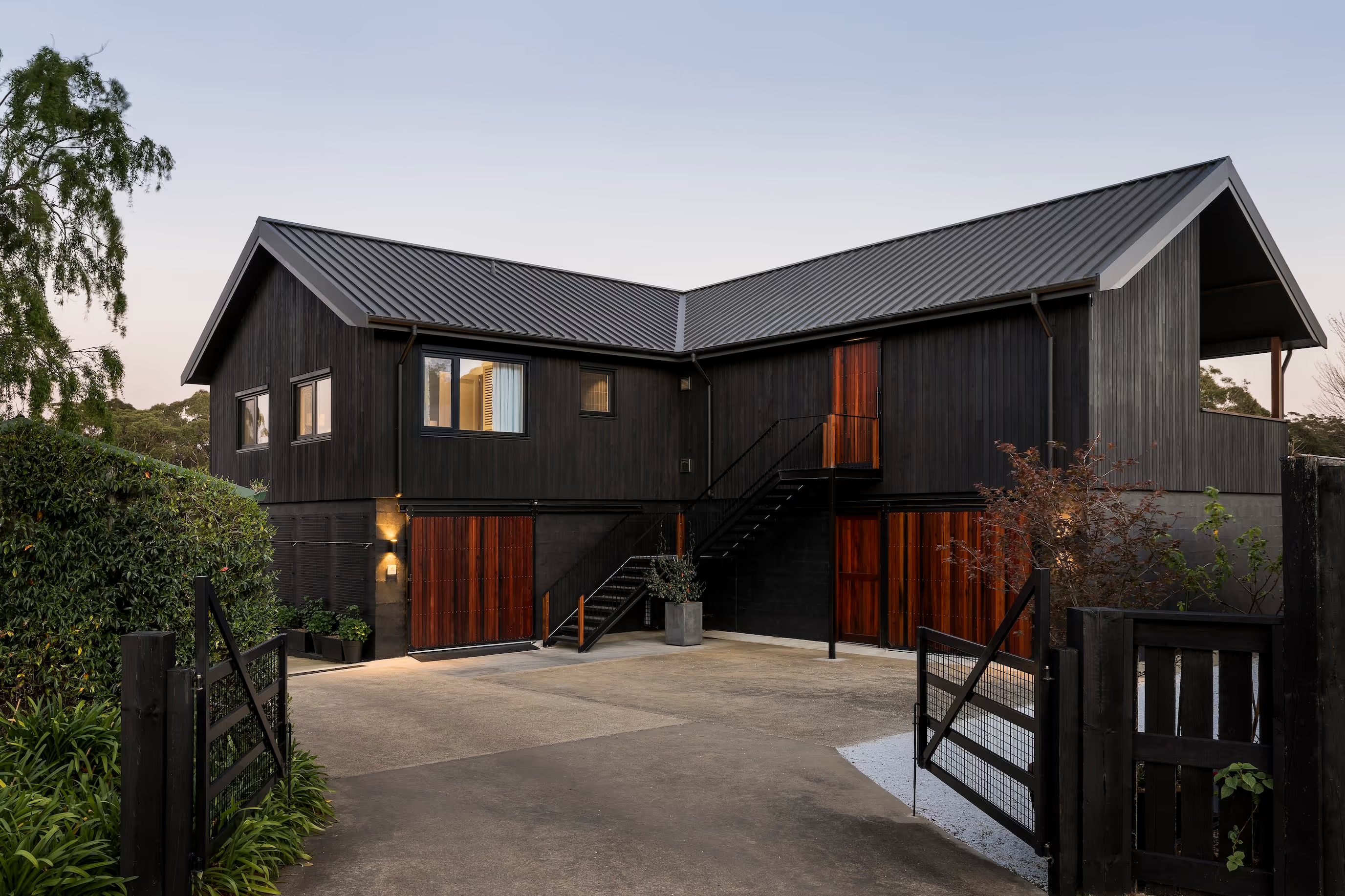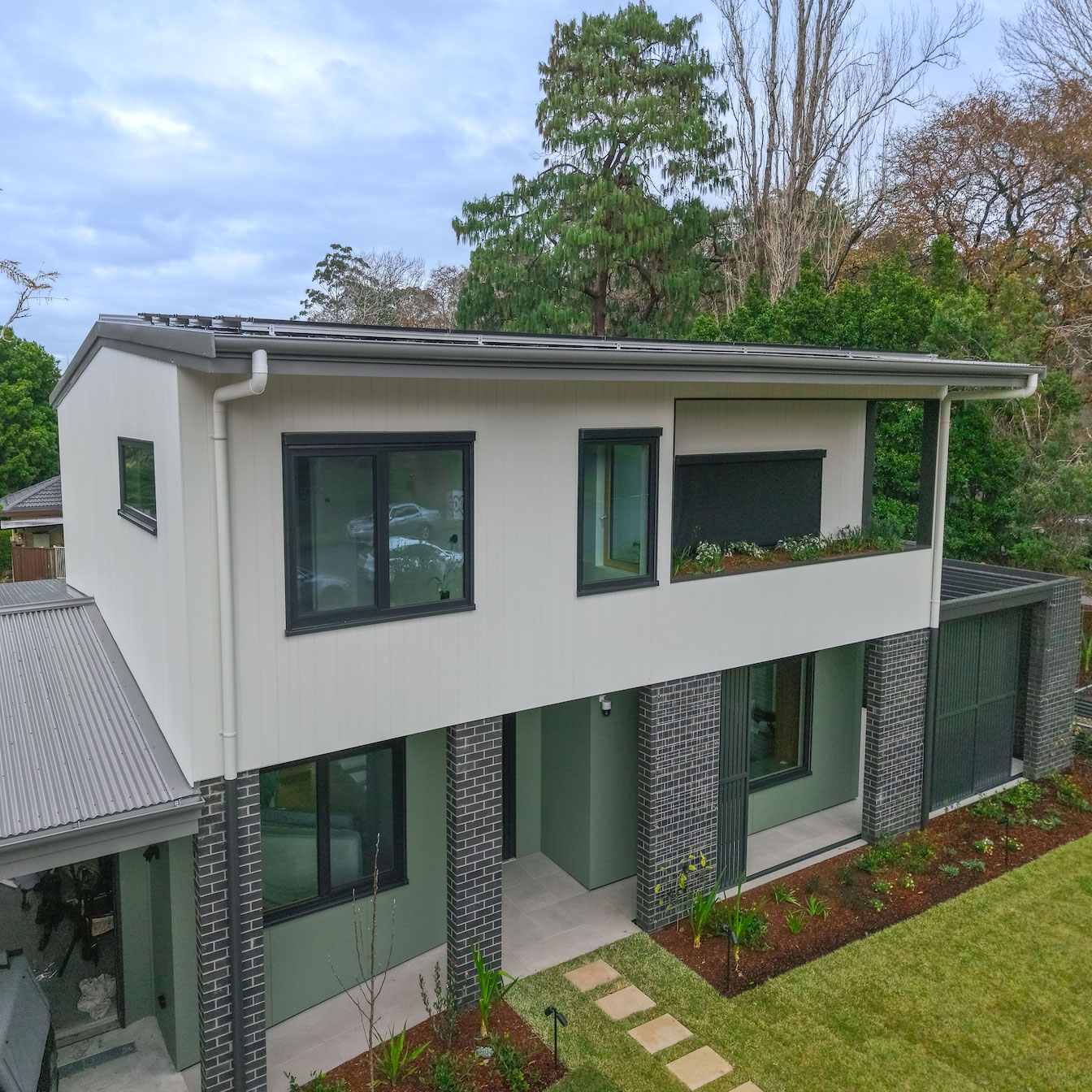
During the 2019/20 bushfires in the Southern Highlands of NSW, the owners were evacuated from their large property multiple times. Increasing resiliency was absolutely top of mind for them when it came to designing this secondary dwelling in the aftermath of those fires.
Although grid-connected, this property is at the end of the transmission line and energy supply is not robust. A new dwelling could not be energy-hungry. These two factors powerfully shaped the form this building took and how it functions.
Sitting on the concrete slab of the former stables adjacent to the original homestead, the ground floor is literally a concrete bunker that delivers a fire-proof, smoke-proof shelter for equipment and livestock if bushfires threaten. It’s a spacious garage and storage room in more ordinary times.
Atop the bunker is a lightweight timber-framed two bedroom home clad in shou sugi ban native hardwood. This traditional Japanese technique creates a charred layer on the outside layer of the wood, which ironically makes the timber very resistant to fire. The dark colour, the vertical cladding and the house orientation all contrast dramatically with the traditional white weatherboards of the original home. However, in a nice unifying touch, the new building’s roofline reflects that of the homestead. Its elevated position delivers sweeping views over the rural landscape.
Thermal breaks in the concrete floor and in structural steel beams have been cleverly detailed and constructed, separating the conditioned and unconditioned living spaces upstairs and preventing uncontrolled heat loss. The lift from the garage opens onto the deeply sheltered deck, providing undercover access without compromising the airtight building envelope.
Building to the Passivhaus standard was an opportunity suggested by Envirotecture, whose team was already experienced with this framework that creates radically energy-efficient, healthy buildings. The benefits dovetailed exactly with the brief, creating a building that can hunker down and passively weather storms of whichever sort arise with minimal energy requirements. The project is built to a mid-level bushfire protection level, significantly more than the site’s BAL12.5 rating indicates is necessary. Remotely controlled external blinds protect timber/aluminium windows from excess heat. These keep the house cool when summer temperatures climb, all while retaining a clear view to outside.
The careful craftsmanship from the construction team is evidenced by an outstanding airtightness test result of 0.2ACH. A ventilation system ensures excellent indoor air quality year round, no matter the temperature outside. A higher-grade HEPA filter can be easily installed when needed to protect against particulate pollution and the smell of smoke. The home is the first certified Passivhaus in the Southern Highlands.

